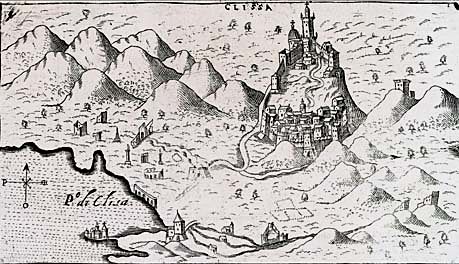|
Heroj-class Submarine
The ''Heroj'' class ( en, Hero) was a class of diesel-electric attack submarines built for the Yugoslav Navy during the 1960s. The three strong class was the second generation of domestically built submarines, representing a significant improvement compared to the earlier . Built at the Brodogradilište specijalnih objekata (eng. Special objects shipyard) in Split, the new class featured a streamlined hull design and four bow facing torpedo tubes that could also be used for minelaying. With the start of the Croatian War of Independence all three boats were relocated from the Lora Naval Base to Montenegro where they were commissioned with the SR Yugoslav Navy. The last two boats of the class, ''Junak'' and ''Uskok'', were decommissioned during the 1990s and scrapped. ''Heroj'' was decommissioned in 2004 and after restoration laid up at the Porto Montenegro Museum in 2013. Description The boats measured in length with a hull diameter of . Surfaced they displaced and while un ... [...More Info...] [...Related Items...] OR: [Wikipedia] [Google] [Baidu] |
Brodogradilište Specijalnih Objekata
Brodosplit is the largest shipyard in Croatia, located in the Supaval bay, on the north side of the Split peninsula. History The company was founded in 1922 by a merger of shipyards in the area and has been in its current location since 1932. With significant development in the latter half of the 20th century, it has grown into one of Croatia's largest shipyards. When Croatia was a part of Socialist Yugoslavia, the Yugoslav Navy's submarines designed by Zagreb's Brodarski Institute were built in this shipyard, which was called ''Brodogradilište specijalnih objekata'' (Special objects' shipyard.) After the breakup of Yugoslavia, Brodosplit became a joint stock company, with the Government of Croatia as the majority holder. It employed nearly 4,000 people and had experience in designing and building a wide range of ships for an international market, diesel engines licensed by B&W (MAN) engine. In 2013, it was privatised and acquired by the Croatian manufacturing company DIV, pe ... [...More Info...] [...Related Items...] OR: [Wikipedia] [Google] [Baidu] |
Pennant Number
In the Royal Navy and other navies of Europe and the Commonwealth of Nations, ships are identified by pennant number (an internationalisation of ''pendant number'', which it was called before 1948). Historically, naval ships flew a flag that identified a flotilla or type of vessel. For example, the Royal Navy used a red burgee for torpedo boats and a pennant with an H for torpedo boat destroyers. Adding a number to the type-identifying flag uniquely identified each ship. In the current system, a letter prefix, called a ''flag superior'', identifies the type of ship, and numerical suffix, called a flag inferior, uniquely identifies an individual ship. Not all pennant numbers have a flag superior. Royal Navy systems The Royal Navy first used pennants to distinguish its ships in 1661 with a proclamation that all of his majesty's ships must fly a union pennant. This distinction was further strengthened by a proclamation in 1674 which forbade merchant vessels from flying any pennants ... [...More Info...] [...Related Items...] OR: [Wikipedia] [Google] [Baidu] |
Vijesti
''Nezavisni dnevnik Vijesti'' (; English translation: ''News'') is a Montenegrin daily newspaper. The paper is published and managed by an entity called Daily Press d.o.o. - a limited liability company based in Podgorica. The company's ownership is currently split between Montenegrin partners (59%), Austrian Styria Medien AG (25%), and an independent US-based fund MDIF (16%), formerly MDLF, which has received funding from multiple investors and foundations, including Open Society Foundations. Published under the "nezavisni dnevnik" (independent daily) mantra, the paper's editorial policy was initially very much in favour of Milo Đukanović and his government's policies and of his relations with Serbia. However, this editorial policy changed sometime after the 2006 Montenegrin independence referendum when ''Vijesti'' turned into Đukanović's critics. On 9 May 2018, Olivera Lakić, Vijesti's investigative reporter who covers crime and corruption in Montenegro was shot and inju ... [...More Info...] [...Related Items...] OR: [Wikipedia] [Google] [Baidu] |
United States Naval Institute
The United States Naval Institute (USNI) is a private non-profit military association that offers independent, nonpartisan forums for debate of national security issues. In addition to publishing magazines and books, the Naval Institute holds several annual conferences. The Naval Institute is based in Annapolis, Maryland. Established in 1873, the Naval Institute claimed "almost 50,000 members" in 2020, mostly active and retired personnel of the United States Navy, Marine Corps, and Coast Guard. The organization also has members in over 90 countries. The organization has no official or funding ties to the United States Naval Academy or the U.S. Navy, though it is based on the grounds of the Naval Academy through permission granted by a 1936 Act of Congress. History The U.S. Naval Institute was formed on October 9, 1873 by fifteen naval officers gathered at the U.S. Naval Academy's Department of Physics and Chemistry building in Annapolis to discuss, among other topics, the impli ... [...More Info...] [...Related Items...] OR: [Wikipedia] [Google] [Baidu] |
Fluid Dynamics
In physics and engineering, fluid dynamics is a subdiscipline of fluid mechanics that describes the flow of fluids— liquids and gases. It has several subdisciplines, including ''aerodynamics'' (the study of air and other gases in motion) and hydrodynamics (the study of liquids in motion). Fluid dynamics has a wide range of applications, including calculating forces and moments on aircraft, determining the mass flow rate of petroleum through pipelines, predicting weather patterns, understanding nebulae in interstellar space and modelling fission weapon detonation. Fluid dynamics offers a systematic structure—which underlies these practical disciplines—that embraces empirical and semi-empirical laws derived from flow measurement and used to solve practical problems. The solution to a fluid dynamics problem typically involves the calculation of various properties of the fluid, such as flow velocity, pressure, density, and temperature, as functions of space and time. ... [...More Info...] [...Related Items...] OR: [Wikipedia] [Google] [Baidu] |
Sail (submarine)
In naval parlance, the sail (American usage) or fin (British/Commonwealth usage) (also known as a fairwater) of a submarine is the tower-like structure found on the dorsal (topside) surface of submarines. Submarine sails once housed the conning tower (command and communications data center), the periscope(s), radar and communications masts (antenna), though most of these functions have now been relocated to the hull proper (and so the sail is no longer considered a "conning tower"). When above the water's surface, the sail serves as an observation platform. It also provides an entrance and exit point on the submarine that has enough freeboard to prevent the submarine being swamped. Under water, the sail acts as a vertical stabilizer. In some submarines, the sail also supports diving planes (or fairwater planes), which are control surfaces used for underwater stability and steering.Office of Naval ResearchSubmarines - How They Work. Retrieved December 24, 2008. See also * Dorsal ... [...More Info...] [...Related Items...] OR: [Wikipedia] [Google] [Baidu] |
Sea Trial
A sea trial is the testing phase of a watercraft (including boats, ships, and submarines). It is also referred to as a " shakedown cruise" by many naval personnel. It is usually the last phase of construction and takes place on open water, and it can last from a few hours to many days. Sea trials are conducted to measure a vessel's performance and general seaworthiness. Testing of a vessel's speed, maneuverability, equipment and safety features are usually conducted. Usually in attendance are technical representatives from the builder (and from builders of major systems), governing and certification officials, and representatives of the owners. Successful sea trials subsequently lead to a vessel's certification for commissioning and acceptance by its owner. Although sea trials are commonly thought to be conducted only on new-built vessels (referred by shipbuilders as 'builders trials'), they are regularly conducted on commissioned vessels as well. In new vessels, they are used ... [...More Info...] [...Related Items...] OR: [Wikipedia] [Google] [Baidu] |
Ship Commissioning
Ship commissioning is the act or ceremony of placing a ship in active service and may be regarded as a particular application of the general concepts and practices of project commissioning. The term is most commonly applied to placing a warship in active duty with its country's military forces. The ceremonies involved are often rooted in centuries-old naval tradition. Ship naming and launching endow a ship hull with her identity, but many milestones remain before she is completed and considered ready to be designated a commissioned ship. The engineering plant, weapon and electronic systems, galley, and other equipment required to transform the new hull into an operating and habitable warship are installed and tested. The prospective commanding officer, ship's officers, the petty officers, and seamen who will form the crew report for training and familiarization with their new ship. Before commissioning, the new ship undergoes sea trials to identify any deficiencies needing corre ... [...More Info...] [...Related Items...] OR: [Wikipedia] [Google] [Baidu] |
Admiral
Admiral is one of the highest ranks in some navies. In the Commonwealth nations and the United States, a "full" admiral is equivalent to a "full" general in the army or the air force, and is above vice admiral and below admiral of the fleet, or fleet admiral. Etymology The word in Middle English comes from Anglo-French , "commander", from Medieval Latin , . These evolved from the Arabic () – (), “king, prince, chief, leader, nobleman, lord, a governor, commander, or person who rules over a number of people,” and (), the Arabic article answering to “the.” In Arabic, admiral is also represented as (), where () means the sea. The 1818 edition of Samuel Johnson's '' A Dictionary of the English Language'', edited and revised by the Rev. Henry John Todd, states that the term “has been traced to the Arab. emir or amir, lord or commander, and the Gr. , the sea, q. d. ''prince of the sea''. The word is written both with and without the d, in other languages, as we ... [...More Info...] [...Related Items...] OR: [Wikipedia] [Google] [Baidu] |
Naval Heritage Collection 01
A navy, naval force, or maritime force is the branch of a nation's armed forces principally designated for naval and amphibious warfare; namely, lake-borne, riverine, littoral, or ocean-borne combat operations and related functions. It includes anything conducted by surface ships, amphibious ships, submarines, and seaborne aviation, as well as ancillary support, communications, training, and other fields. The strategic offensive role of a navy is projection of force into areas beyond a country's shores (for example, to protect sea-lanes, deter or confront piracy, ferry troops, or attack other navies, ports, or shore installations). The strategic defensive purpose of a navy is to frustrate seaborne projection-of-force by enemies. The strategic task of the navy also may incorporate nuclear deterrence by use of submarine-launched ballistic missiles. Naval operations can be broadly divided between riverine and littoral applications (brown-water navy), open-ocean applications (blue- ... [...More Info...] [...Related Items...] OR: [Wikipedia] [Google] [Baidu] |
Uskok
The Uskoks ( hr, Uskoci, , singular: ; notes on naming) were irregular soldiers in Habsburg Croatia that inhabited areas on the eastern Adriatic coast and surrounding territories during the Ottoman wars in Europe. Bands of Uskoks fought a guerrilla war against the Ottomans, and they formed small units and rowed swift boats. Since the uskoks were checked on land and were rarely paid their annual subsidy, they resorted to acts of piracy. The exploits of the Uskoks contributed to a renewal of war between Venice and the Ottoman Empire (1571–1573). An extremely curious picture of contemporary manners is presented by the Venetian agents, whose reports on this war resemble a knightly chronicle of the Middle Ages. These chronicles contain information pertaining to single combats, tournaments and other chivalrous adventures. Many of these troops served abroad. After a series of incidents that escalated into the Uskok War (1615–1618), the Uskok activity in their stronghold of ... [...More Info...] [...Related Items...] OR: [Wikipedia] [Google] [Baidu] |



.jpg)
_underway_2009.jpg)

